From infrastructure control to no-code, low-code software, learn what IaaS, PaaS, and SaaS are, what sets them apart, and how businesses can use them to lead with agility.
What do India’s fast-growing startups and legacy enterprises have in common? They’re all leaning into the cloud—fast.
Cloud computing is no longer just a cost play. It’s a way for businesses to move quicker, stay resilient, and serve customers with greater agility.
The three core service models of cloud computing, i.e., IaaS (Infrastructure-as-a-Service), PaaS (Platform-as-a-Service), and SaaS (Software-as-a-Service), are driving this shift. Each of these models serves a different purpose, so knowing when and how to deploy them can help you design the right strategy to scale, innovate, and get better Lifetime Value (LTV).
Salesforce is one of the first movers in this space. 1999 saw the launch of our first cloud-based CRM, which allowed multiple users to access the software on a single machine, showcasing the scaling capabilities of cloud computing.
Whether you’re building from the ground up or modernising legacy systems, understanding how IaaS, PaaS, and SaaS work is key to getting it right.
What is IaaS, PaaS, and SaaS?
IaaS (Infrastructure as a Service) provides on-demand access to IT infrastructure like servers, storage, and networking through the cloud.
PaaS (Platform as a Service) offers a cloud-based environment with tools to develop, test, and deploy applications without managing the underlying hardware.
SaaS (Software as a Service) delivers fully functional software applications over the internet, typically through a subscription model, with everything managed by the provider.
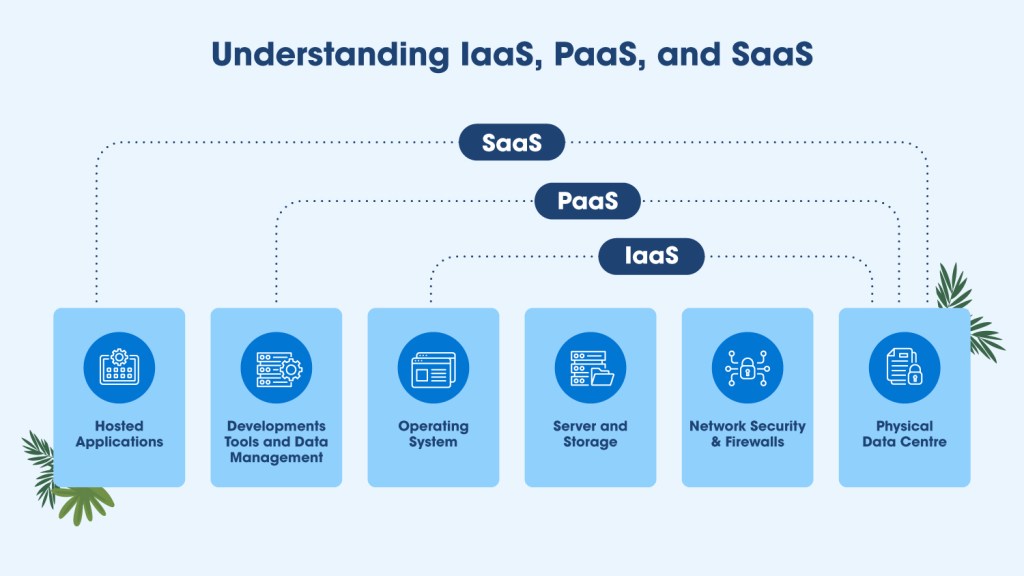
These three models represent the core layers of cloud computing and offer varying levels of control, flexibility, and speed. IaaS is ideal when you want to scale infrastructure without physical investments. PaaS empowers development teams to build and launch applications faster. SaaS lets end users access powerful tools without setup or maintenance.
Whether you’re migrating systems, launching a digital-first business, or modernising customer operations, understanding these cloud models is key to crafting the right strategy.
Understanding IaaS: Benefits and use cases
When businesses want maximum control over their IT resources without the burden of physical infrastructure costs, they turn to IaaS.Traditional IT resources needed to run applications or store data require time and capital, and IaaS helps in reducing this burden.
IaaS provides flexible, scalable access to essential computing resources, such as servers, storage, and networking, all on demand, and billed based on usage. This makes it ideal for companies looking to build customised environments at low cost while maintaining operational agility. For CXOs steering digital transformation, IaaS provides the same technologies and capabilities as a traditional data centre without having to physically manage or maintain all of it.
IaaS is often the first step in a company’s cloud computing journey. It offers flexibility without the overhead of owning infrastructure, making it ideal for businesses managing heavy workloads, seasonal spikes, or growth experiments.
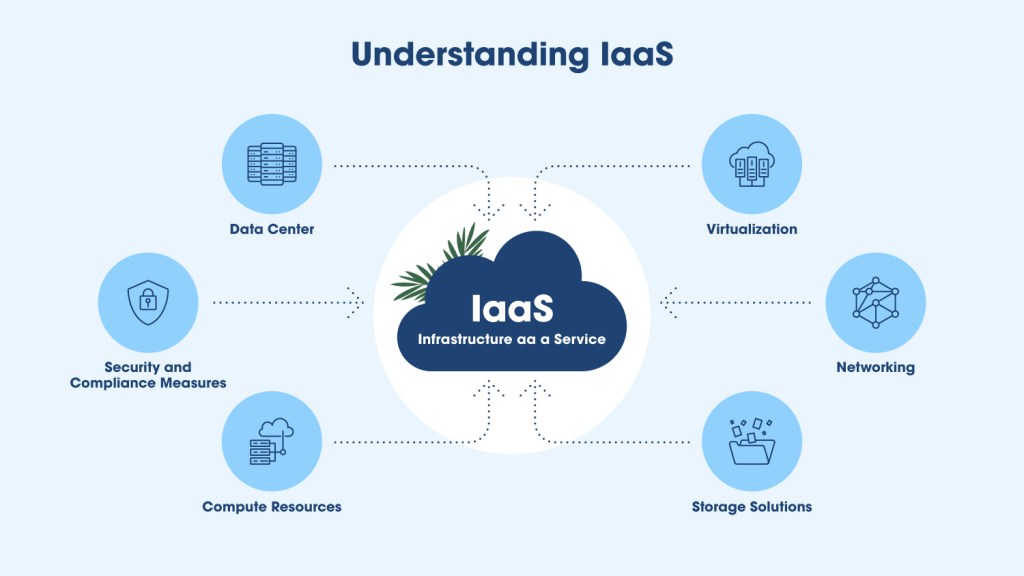
Benefits
- Scalability without limits: If businesses face a sudden spike in website traffic or a seasonal increase in demand, they can almost instantly acquire the required computing power and bandwidth with IaaS.
- Cost efficiency: Companies can avoid the upfront capital expense of purchasing hardware and maintaining on-premises infrastructure, which frees up budgets for innovation and strategic initiatives.
- Business continuity: IaaS providers offer enterprise-grade redundancy, backup systems, and data recovery capabilities that would be costly to replicate in-house, ensuring minimal downtime and stronger disaster recovery.
- Security at scale: Enterprise-grade IaaS solutions, such as Salesforce, include advanced cloud security features like encryption, identity access management, and compliance certifications, helping protect sensitive data while staying agile.
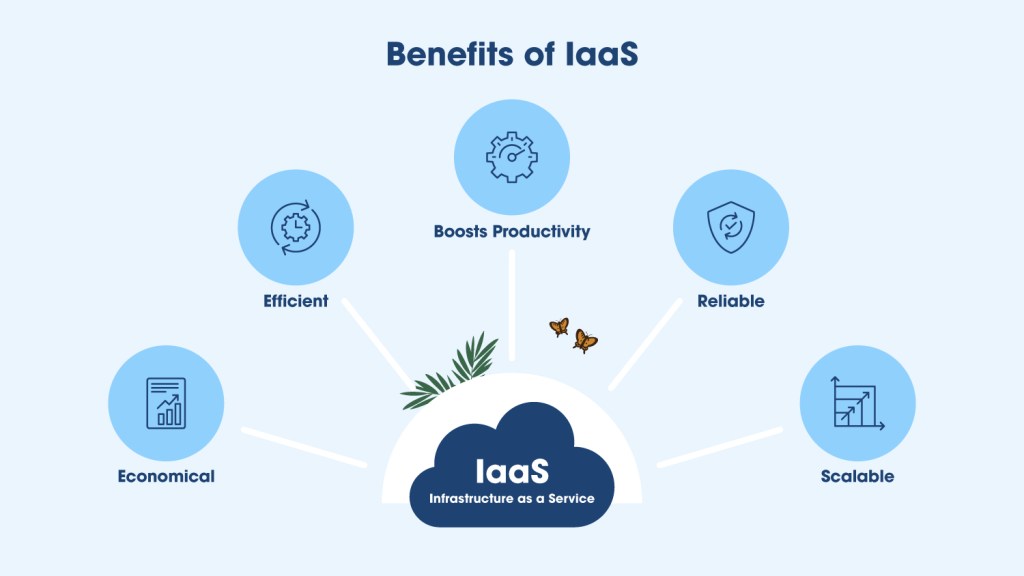
Real-world use cases
● An e-commerce brand scaling its backend to handle festive-season traffic
● A fintech startup running large-scale simulations or analytics in secure cloud sandboxes
● A global enterprise spinning up new environments for regional testing, then shutting them down when done
IaaS offers the control of on-premise systems with the speed and flexibility of the cloud environment. For Indian businesses operating in regulated industries like banking, healthcare, and telecom, IaaS also enables hybrid setups, where sensitive data can remain on-premises, while leveraging cloud power for compute-heavy tasks like AI model training or real-time analytics.
What scenarios will IaaS be good for?
The flexibility and scalability offered by IaaS is useful for organisations that
● Have unpredictable workload volumes or need to move quickly in response to business fluctuations
● Require more infrastructure scalability and agility than traditional data centers can provide
● Have high business growth that outpaces infrastructure capabilities
● Experience unpredictable spikes in demand for infrastructure services, and
See lower utilisation of existing infrastructure resources.
Hybrid cloud and AI-readiness
Most Indian companies scaling up their AI programs are finding themselves caught between two worlds – they want cloud flexibility but can’t abandon their on-premises systems due to regulatory headaches.
That’s why hybrid cloud setups are booming here. IaaS gives these businesses a practical middle path – keeping sensitive stuff in-house while tapping cloud resources when they need serious computing muscle for AI training or data crunching.
This balancing act makes innovation less risky. Companies can play with cutting-edge tech without falling afoul of governance requirements or data location rules – a huge consideration for banks, healthcare providers, and others trying to navigate India’s constantly shifting regulatory landscape.
While IaaS lays the foundation for infrastructure flexibility, PaaS builds on top of it and offers developers the tools and environment to innovate faster, without worrying about what’s under the hood.
Understanding PaaS: Benefits and use cases
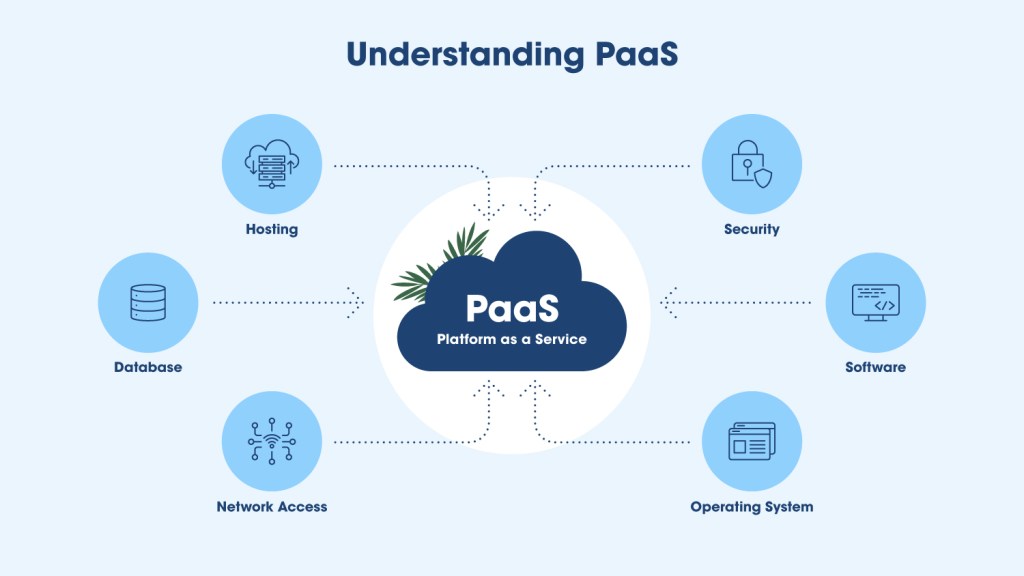
Platform-as-a-Service (PaaS) provides a ready-to-use environment that can be used to develop, test, deliver, and manage applications. You don’t need to worry about managing the underlying infrastructure, allowing you to focus solely on deployment.
PaaS makes it simpler to develop and deploy applications by providing a pre-configured, ready-to-use environment in the cloud. With this, developers can focus on writing and deploying the code without worrying about servers, operating systems, or storage.
This becomes especially valuable for businesses under pressure to deliver new digital experiences quickly. PaaS means faster time to market, better collaboration between dev teams, and fewer infrastructure bottlenecks.
Read: How Tata Consumer Products scaled retail operations with a sales and distribution engine built on the Salesforce Platform, empowering reps to serve 1.6M+ outlets efficiently.
Benefits
- Simplifies development operations: PaaS takes care of the heavy lifting, such as managing servers, runtime, and security patches. Your teams can focus on building and shipping applications, not setting up environments.
- Speeds up time to market: With pre-configured development tools, built-in testing frameworks, and seamless integrations, teams can move from concept to launch in a fraction of the time it would take with traditional infrastructure.
- Supports better collaboration: Developers working across geographies can access the same tools and environments in the cloud, making it easier to coordinate, review, and deploy updates without versioning headaches or infrastructure conflicts.
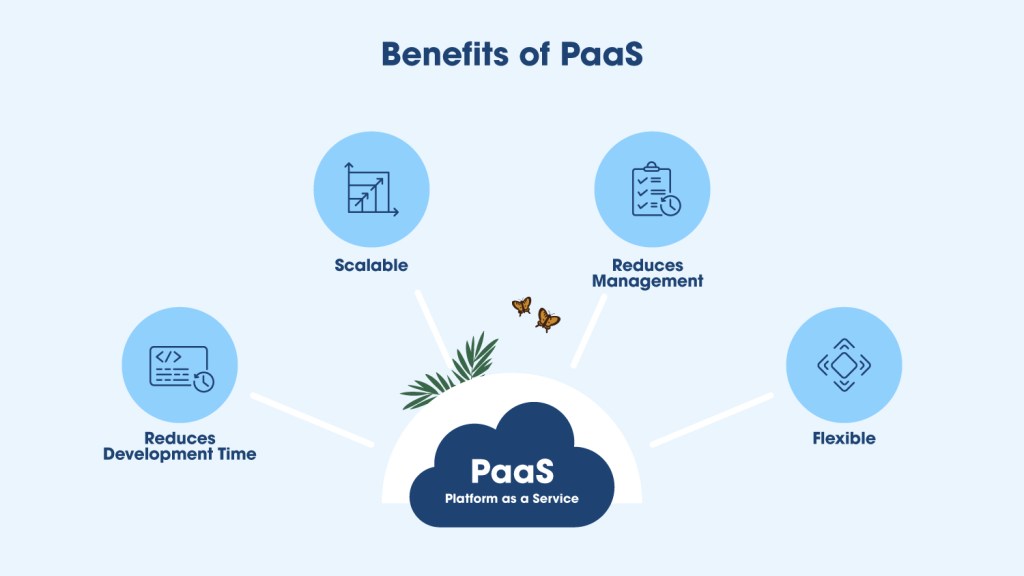
Real-world use cases
Let’s say your internal development team is working on a customer-facing mobile app. With PaaS, they can build, test, and launch the application without needing to procure new infrastructure or worry about managing deployment environments. Everything they need—from databases to version control—is ready to go, so development moves faster and with fewer bottlenecks.
In more regulated sectors like financial services, PaaS enables rapid prototyping without compromising stability. A team might use it to build a secure client portal, run controlled tests, and gather user feedback before rolling it out widely, without disrupting core systems already in place.
A great example of this is Salesforce Heroku. Businesses use it to develop modern, scalable applications in languages like Python, Node.js, and Ruby. It also integrates well with Salesforce CRM, making it easier to build seamless experiences that connect internal tools with customer-facing platforms.
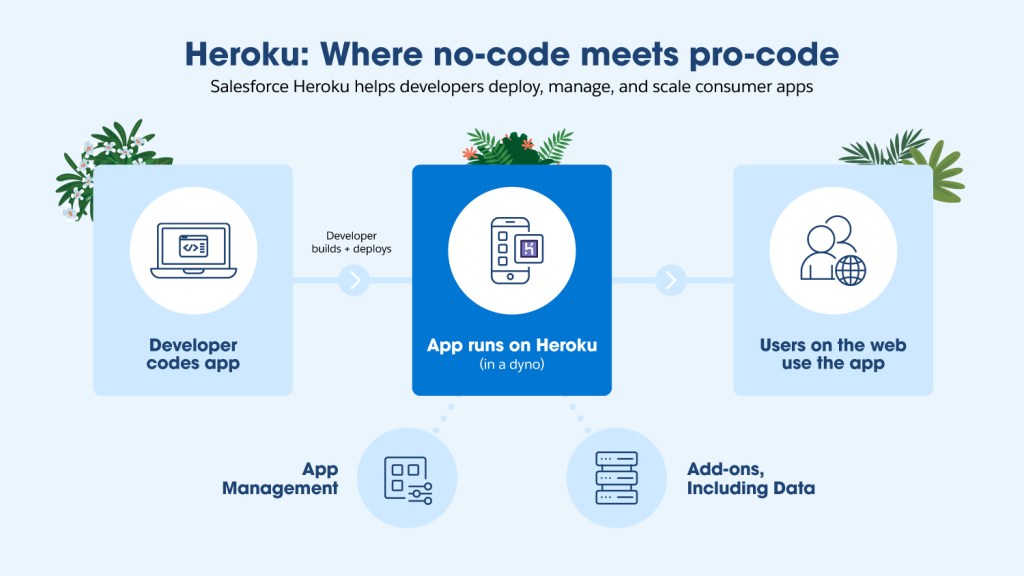
What scenarios will PaaS be good for?
PaaS shines in fast-paced environments where time, consistency, and developer efficiency are non-negotiable. It removes complexity so that teams can focus on what matters—solving real problems and delivering better digital experiences, faster.
PaaS is suitable for organisations that:
- Create unique and custom applications without investing in owning and managing infrastructure
- Want to rapidly test and deploy applications
- Have legacy applications and want to reduce the cost of operations
- Have a new project that they want to update and deploy quickly by growing and updating the app as fast as possible
- Want to only pay for the resources while they’re being used, and
- Want to offload time-consuming tasks such as setting up and maintaining application servers, and development and testing environments
Understanding SaaS: Benefits and use cases
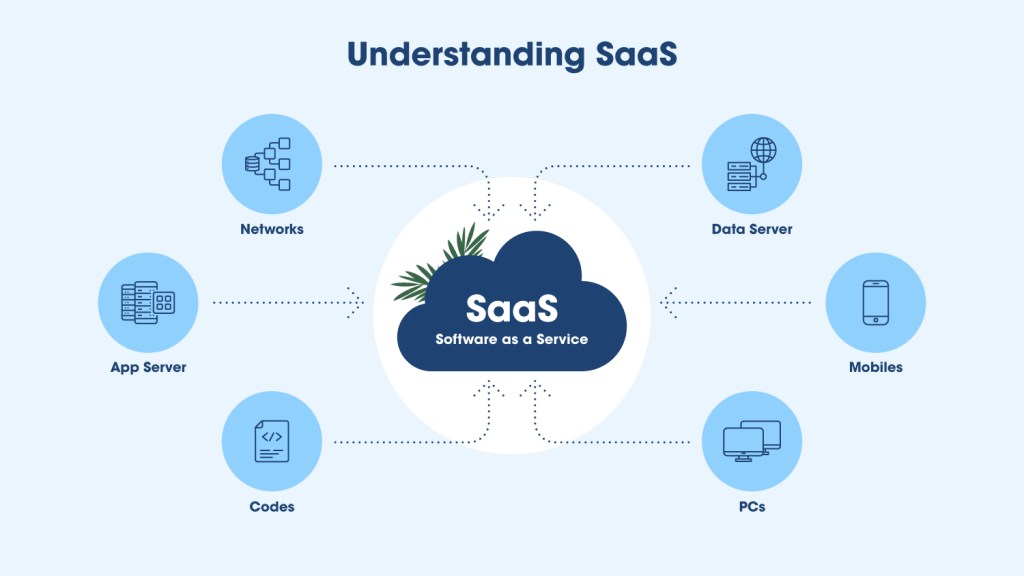
SaaS is arguably the most famous cloud computing model out of the three, as it is primarily used for end-user use cases and is the easiest to adopt. It offers fully functional applications accessible over the internet, eliminating the need to install, host, or maintain software locally. Users can simply subscribe and start using the app for various use cases, such as customer relationship management and collaboration tools.
The appeal of SaaS lies in its simplicity. Teams don’t need to worry about upgrades, patches, or infrastructure. Everything is handled by the provider, which means faster onboarding, lower IT overhead, and more predictable costs.
Read how Bajaj Finance Limited Auto Finance wheels in faster, easier lending journeys with Salesforce CRM.
Benefits
● No maintenance headaches: Updates, patches, and infrastructure are all managed by the provider, ensuring you’re always running the latest, most secure version.
● Quick to implement and scale: New users or teams can be onboarded in hours, not weeks, with minimal support from IT.
● Lower upfront investment: With no hardware requirements and a subscription-based pricing model, SaaS makes enterprise-grade software more accessible to growing businesses.
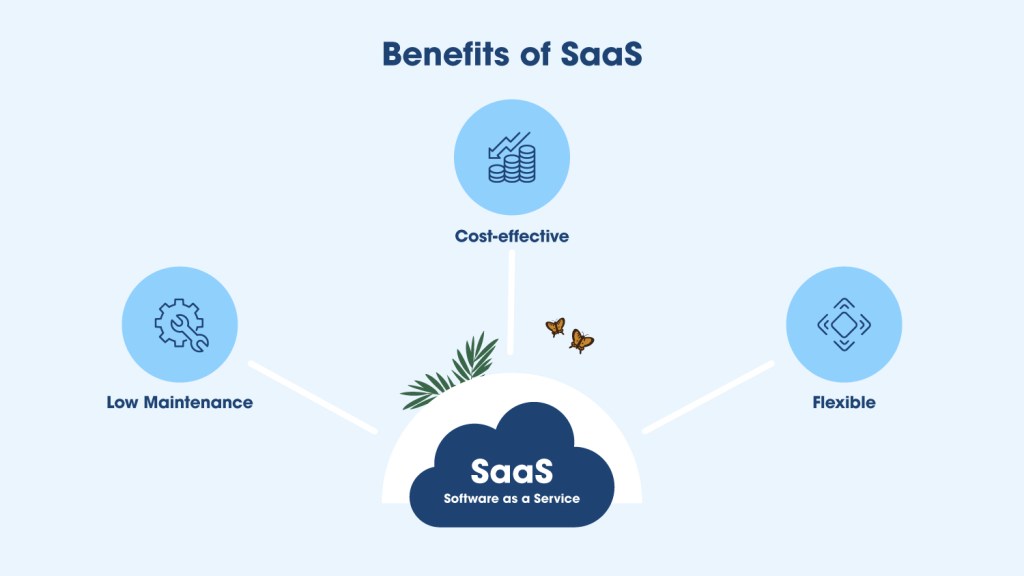
Real-world use cases
Take Salesforce CRM, for example. Teams can log in from anywhere, get a complete view of the customer, and automate workflows—all without ever touching a line of backend code or worrying about system maintenance.

Sales Cloud
Raise efficiency and lower costs with scaled automation and intelligent analytics using real-time data with Sales Cloud.

Service Cloud
With the Service Cloud, you can power your sales teams to do more with less with automated processes and data that drive connected customer experiences.

Marketing Cloud
Make every engagement count whilst building lifelong loyal relationships with the Marketing Cloud.

Commerce Cloud
Adapt quickly to boost sales profitability and reduce inventory risk with Commerce Cloud.
The same applies to other SaaS categories—project management tools like Trello or Asana, marketing automation platforms, communication tools like Slack, HR systems, and even AI-powered analytics dashboards. For most core business functions, there’s a SaaS platform that can be deployed with minimal effort and immediate ROI.
For Indian businesses, SaaS adoption is increasing across industries, from retail and healthcare to BFSI and manufacturing, as companies seek nimble, cost-effective ways to digitise operations without committing to long implementation cycles.
Continuing with the same example, with the app and website set up, the e-commerce company can deploy a CRM solution like Salesforce CRM to manage customer relationships, marketing campaigns, and customer service tickets.
What scenarios will SaaS be good for?
SaaS is suitable for organisations that:
- Want to use standard software solutions that require minimal customisation
- Don’t want to invest time or internal expertise in maintaining applications or infrastructure
- Need more time for IT teams to focus on strategic projects, and
- Need to access apps from various devices and locations
Each cloud model offers a different level of control, flexibility, and management, helping businesses of all sizes choose the right tools based on their technical capacity, goals, and resources.
The key differences between on-premise, IaaS, PaaS, SaaS
On-premise models offer full control over everything, meaning you can use your resources however you like for any use case. However, that also means you will need to purchase, maintain, and upgrade your own hardware, which drives the cost and slows scalability.
Cloud services offer different levels of abstraction from infrastructure, meaning you sacrifice control for simplicity and internal management.
Here’s a side-by-side comparison to help you understand the differences better.
| Feature | On-premise | IaaS | PaaS | SaaS |
| Ownership | Full ownership of hardware and software | Infrastructure rented; apps managed in-house | Platform provided; code managed in-house | Fully managed by the provider |
| Control | Maximum | High | Moderate | Minimal |
| Scalability | Limited by hardware | High, based on usage | High, rapid deployment | Very high, near-instant |
| Maintenance | Fully internal | Hardware managed externally | The platform is maintained by the provider | Fully provider-managed |
| Use case | Legacy systems, data sovereignty | Flexible infrastructure setup | Rapid application development | Quick adoption of end-user tools |
| Cost structure | High upfront CAPEX + ongoing OPEX | Pay-as-you-go OPEX | Subscription/ licencing | Subscription/ licencing |
For most use cases, the shift is rarely binary. Hybrid systems that mix on-premise systems with a suitable cloud model allow businesses to keep sensitive systems in-house and move customer-facing and productivity aspects to the cloud.
The key is to match the right model—or combination of models—to the problem you’re solving and the agility your teams need.
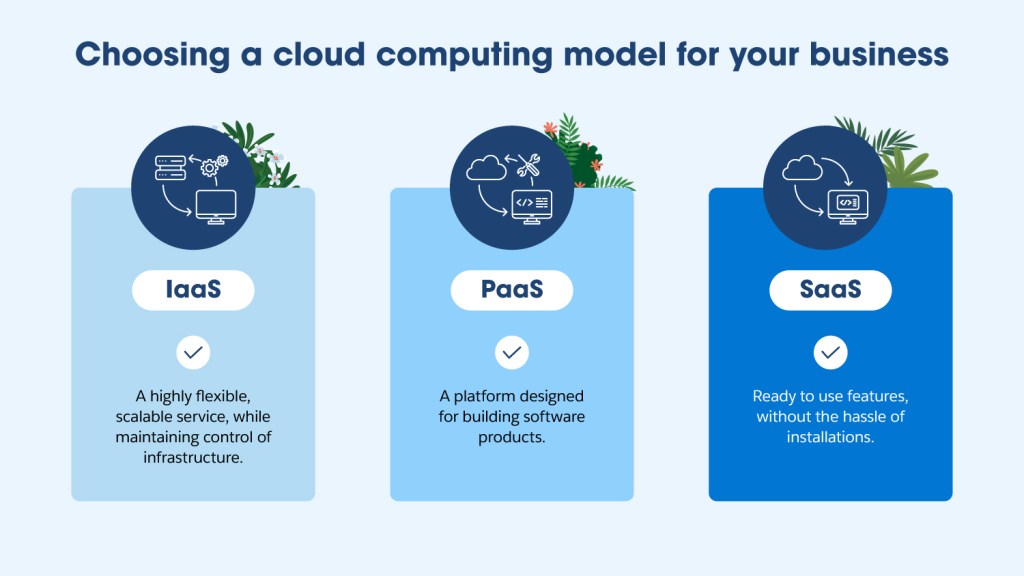
Cloud maturity is not about complexity, but clarity. Clarity about what to own and manage, what to delegate, and when to scale. For modern enterprises, the choice between IaaS, PaaS, and SaaS often comes down to infrastructure flexibility, development speed, and software scalability. So, instead of selecting a single model, look at a combination of cloud models and use on-premise systems to keep your sensitive information safe.
- What is the best option: SaaS, PaaS, or IaaS?
There’s no one-size-fits-all answer—each model serves a different purpose. SaaS is ideal for teams that need ready-to-use applications with minimal setup. PaaS suits businesses focused on building and deploying applications quickly. IaaS works best for those needing full control over infrastructure without managing hardware. The right choice depends on your existing IT setup, internal capabilities, and how fast you want to move. - What is the difference between PaaS and SaaS?
SaaS delivers complete, ready-to-use software for end users. PaaS, on the other hand, provides a platform for developers to build and launch custom applications. With the former, you use the software; with PaaS, you create it. - How does IaaS differ from PaaS?
IaaS gives you access to virtualised infrastructure—servers, storage, and networks—that you can configure and manage as needed. PaaS sits a layer above, offering tools and services for developing applications without managing the underlying infrastructure. - Can businesses combine IaaS, PaaS, and SaaS?
Absolutely. Most companies use a mix of these models to match different needs. For example, you might use IaaS to host your website backend, PaaS to develop a customer app, and SaaS for your CRM or internal communications. This layered approach offers both flexibility and speed.



















